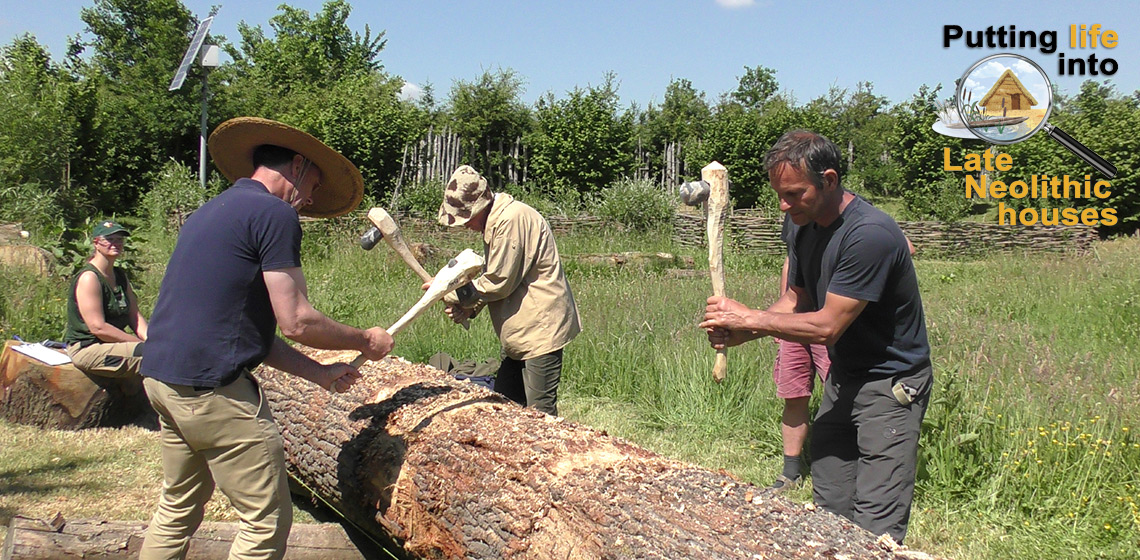The content is published under a Creative Commons Attribution Non-Commercial 4.0 License.
Unreviewed Mixed Matters Article:
Putting life into Late Neolithic houses

Investigating Domestic Craft and Subsistence Activities through Experiments and Material Analysis
Leiden University currently coordinates the project “Putting Life in Neolithic Houses”. Th is will take until 2025 and is funded by the Dutch Research Council NWO. Besides EXARC, other partners are: BIAX Consult Biological Archaeology & Environmental Reconstruction, Stichting LAB (Leids Archeospecialistisch Bureau), Woud en Beek, York University, Rijksdienst voor het Cultureel Erfgoed, Masamuda, Studio Kelvin Wilson, Het Stenen Tijdperk, and TGVideo.
Masamuda is an archaeological open-air museum near Rotterdam and also an EXARC member. Here a houseplan from the Neolithic Vlaardingen culture was reconstructed with help of Leiden University. Once the house was done, the question was how to bring this to life? We know surprisingly little about the role of material
culture and the activities tools and objects involved. In this project we will use a combination of experimental archaeology, microwear and residue analysis to enrich our knowledge about daily life in the Vlaardingen period.
This project intends to perform a detailed biographical analysis of objects from a cross-craft perspective: can we detect toolkits composed of different objects made of different materials, involved in one specific activity? In a series of workshops, the volunteers of Masamuda will carry out various experiments related to daily life in the Vlaardingen period. In doing so, they will be actively involved in the furnishing of the house, and in the tasks that will be carried out in and around the house and
the surrounding landscape.
Making a Dugout Canoe - Big Project for 2021, to be made by the Masamuthda Boat Builders
The major project for 2021 is the making of a dugout canoe. At the end of May, a 6,5-meter-long oak trunk was delivered at the Vlaardingen house. Over the summer,
volunteers turned this trunk into a canoe with which we will explore the waters around Vlaardingen. A literature search showed that oak wood was regularly used in the Neolithic for making canoes. More importantly, a canoe fragment of oak had been found in the Vlaardingen strata of the site of Hazendonk.
We made several polished fl int axes of the Buren type, which were documented microscopically before being used. Th is way we would be able to follow the development of the wear traces on such a newly made axe. As it is impossible to move such a big heavy trunk before it was turned into a canoe, we postulated that some people must have left the delta on an expedition of several weeks to find oak trees of this size and make the dugout at the site of the tree felling. Some of our questions are:
- When would be a likely time for such an expedition, one that would not conflict with other activities in the yearly seasonal round?
- Who would have joined such an expedition?
- How did they live in such an encampment, what kind of structure may they have had for the weeks that it probably took to finish the dugout?
- Could they, in the meantime, have collected food sources to take back to the delta such as acorns?
We would welcome your input on the questions above via info@exarc.net.
Please check the website for more information: https://www.puttinglife.com
This project is funded by the Dutch Research Council NWO (AIB.19.020).
Country
- the Netherlands

